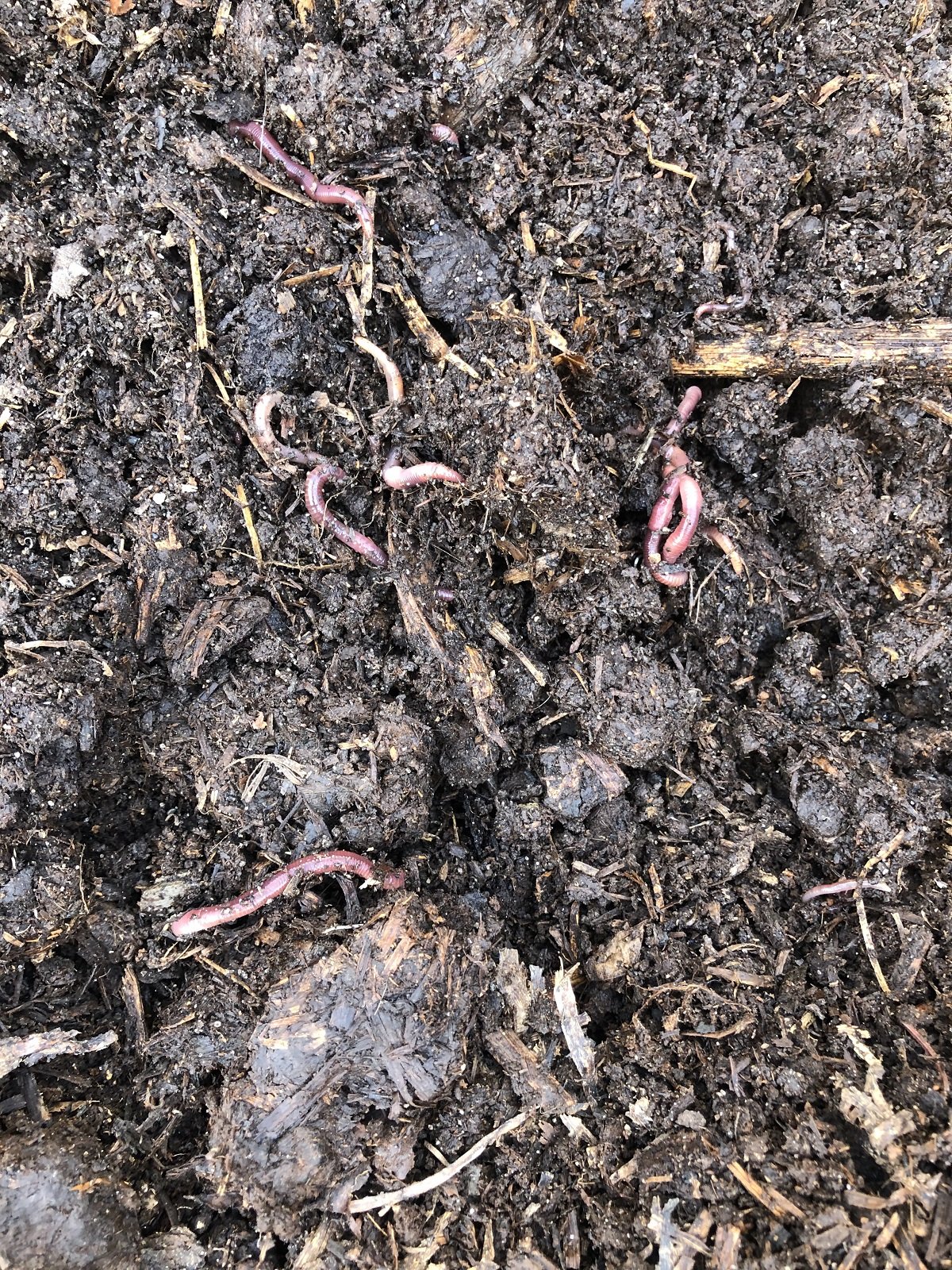Amending soil organically
Soil is truly the most important variable in your garden, no matter what type of garden you have. It will directly determine your plant’s ability to thrive and have a large impact on your harvest. For this reason, our master class, A Year in the Urban Garden focuses heavily on soil, how to build it up, support it and regenerate it. For this blog post, let’s look at some of the characteristics of healthy soil and then we will share our best tips and tricks for building great soil. So let’s get started with some definitions.
What is the soil food web?
The soil food web is a living system that comprises an incredible breadth of organisms large and small that work together to exchange nutrients and resources within an ecosystem. It is alive!
What is organic matter?
We often hear that we should add organic matter to our gardens but what is it? Organic matter is the good stuff. It’s what our soil needs in order to be able to have good structure and it is the building blocks of good soil. Organic matter can be living: think plants, plant roots and all of the other small living organisms like worms, insects and microorganisms. Organic matter can also be dead - think carbon rich matter that is decayed like compost and humus.
This information is useful to us in helping us understand why we should amend our soil and how we should amend our soil. Having a grasp on the process of building your soil is essential to then moving towards amending your soil.
The difference between a soil amendment and a synthetic fertilizer
A soil amendment is a naturally occurring product that is added to your garden to improve the quality of your soil by feeding it. A synthetic fertilizer is a chemically contrived product that is created to deliver specific nutrients to your plants.
So why choose one over the other?
When we choose to feed the plants over feeding the soil, we bypass the soil organisms that should be feeding the plants and in doing so change the composition of the soil from healthy biodiverse soil to soil that is more inert and less alive. Soil that loses biodiversity and nutrients will not help you grow strong, pest and disease resistant plants and will not create a habitat where your plants thrive.
Now that you know about the soil food web, organic matter and soil amendments, let’s look at the ways in which you can build soil in your garden and the amendments that might be right for you and your space.
Worm castings: this is the gold standard of garden amendments. Comprised of the excrement from worms, this nutrient dense compost will help rejuvenate the soil and contains many beneficial microbes.
Compost: properly created and cured compost has a good balance of nutrients that will deliver a breadth of biodiversity and benefits to your garden beds.
Kelp meal: kelp meal adds organic matter to the soil and breaks down slowly releasing nutrients over time.
Black strap molasses: can play an essential role by providing complex sugars as a rich carbon source. It stimulates the soil microorganisms to help break down larger matter in the soil.
Activated effective microorganisms is a liquid mixture of important beneficial microorganisms that are known to work cooperatively to provide tremendous benefits for soil and plants.
Timing your amendments
So you might be asking yourself, well when should I amend my soil and with which of the products listed above? These are of course good questions. While it is difficult to distill soil amending advice into a blog post, let’s look at three simple techniques that should work for any garden without being too reductive in the science of soil and without knowing the specifics of the garden you might have.
Spring is a great time to top dress your garden with several inches of compost or worm castings. This means that you add this organic matter on top of your garden beds or containers without tilling it in.
Water soluble amendments like the kelp meal, molasses and effective microorganisms are a good way to feed your soil once your plants have started growing and are several inches tall.
You can also add a handful of worm castings or compost into the base of the hole you have dug to transplant your seedlings or plants. This will provide the root system with nutrients as it gets over any transplant shock.
Dos and Don’ts
Lastly, let’s go over a list of dos and don'ts for soil amending just to be extra clear!
DO top your garden beds and containers with several inches of good quality compost or vermicompost every season.
DON’T till your soil as it breaks down the soil food web and damages your soil structure. Tilling includes turning your soil over with a shovel.
DO source your soil amendments from a reputable supplier. Big box stores are generally not the place to purchase these as they focus on synthetic and mass produced products.
DON’T forget that if you are gardening in containers or raised beds that don’t have access to the soil beneath them you will have to add substantially more organic material each season.
DO mulch your soil! Covering your soil with a natural mulch such as straw or leaves will help retain moisture, suppress weeds and your mulch will break down adding carbon to the soil.
We hope this helps you approach amending your soil this spring with more enthusiasm and knowledge. To learn more about soil building don’t forget to join us in our master class, A Year in the Urban Garden.







